The Sternum Checker Needs to be Chucked
Heads-up, gentle reader: this is an opinion piece. As such, you may not agree with everything I’ll be saying, and that’s perfectly fine.
I have been biased against the Sternum Checker ever since I first saw it. There was something fundamentally evil about the thing. It seemed so simple and innocuous; it looked designed not to challenge, but rather to hurt. Badly. This opinion was painfully confirmed after a bruising day spent practicing it at an OCR Expo in Montreal last Summer.
The injuries to racers at a recent event were the last straws for me, and I asked Mud Run Guide if I could write an op-ed/rant about it. They said “yes,” so here we all are.
The Straw that Broke the Camel’s Clavicle
I had slept in impressively after a long day of coaching and presenting at the Alpha OCRWC Training Camp, and so was running rather late as I drove to the Sunday morning race to volunteer. On my way there, an ambulance goes screaming past me on LakeShore Boulevard, and I think; “sternum checker.” Then the ambulance takes the turnoff onto Cherry Street and heads towards the race venue.
After parking I make a beeline to where the sternum checker is set up, hoping that I’m wrong. No such luck, as I arrive to find a racer sprawled under it being carefully loaded onto a stretcher by the paramedics. Enough is bloody well enough already. It’s high time we got rid of this obstacle before it gets rid of any more racers.
The Sternum Checker: what is it and where did it originate?
I am not going to assume that everyone reading this knows what the sternum checker is. You’ll notice immediately that there is a wide variety of things called “sternum checker,” but this isn’t an op-ed about standardization of obstacles. Not yet anyways.
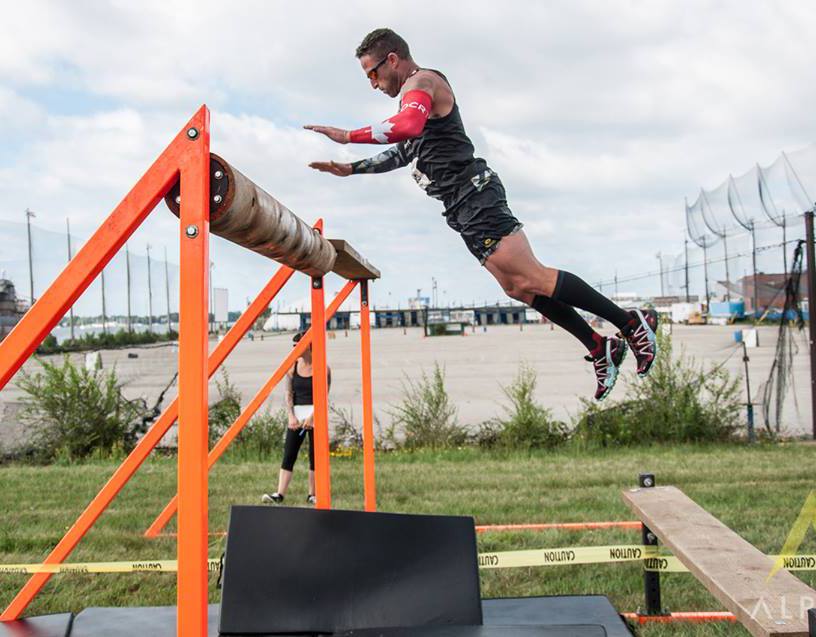
Anyway, the challenge is to get yourself over the second and higher of the two logs. This is usually done by running at it, stepping up onto the lower “launch-pad” log, and jumping at the upper log. Remember that this was for military people wearing upwards of 50 lbs of gear and packs, not OCR racers, so they were EXPECTED to slam into the top log with their chests. Hence the name.
A brief exposé of the origin of this obstacle is in order. It was developed by some forgotten sadistic genius as part of the world of military boot camps. Note that this is not “bootcamp-style” group training, but actual, real, brutal military bootcamps. The goal here is not to get you all into shape and to have fun while getting fit. Nay-nay. The goal here is to break people before rebuilding them into perfect fighting men and women. Since its introduction to the world of OCR, it has kept right on doing just that: breaking racers.
Former king-of-the-hill of the “O” in “OCR,” the mostly departed BattleFrog Series was, unsurprisingly, an early adopter of the Sternum Checker. The race was started by Navy Seals after all. Despite this elite hardass military origin, they decided to stop using it in 2015 because they considered it too dangerous. Not too hard: too dangerous. (See Additional Note at Bottom from former BattleFrog Race Director)
The obstacle features prominently in their “College Championships” TV show, and it’s usually the girls who have to do it. They almost all blow through it with no problems, which goes to show that it is not a difficult obstacle. Go to Youtube and search for “Battlefrog College Championship” and you’ll see what I mean. FYI they call it “the dirty word” not “sternum checker” on the show.
An Objective Analysis of the Obstacle
Sternum Checker is the only regularly used obstacle that I have come across that is designed to hurt you even if you do it right. The initial and obvious challenge is to absorb the impact against the log (failure = bruised or broken sternum, xiphoid, ribs, ruptured spleen, bruised liver, broken wrist, broken clavicle, broken jaw, lost teeth). The next and potentially much more dangerous challenge is to try not to let the momentum of your legs pull you off it backward. Failure here puts you in a very vulnerable position, landing on your back, neck, or head. Finally, you then have to try to pull yourself up onto and over the log to complete the obstacle and keep your precious band or avoid the burpees.
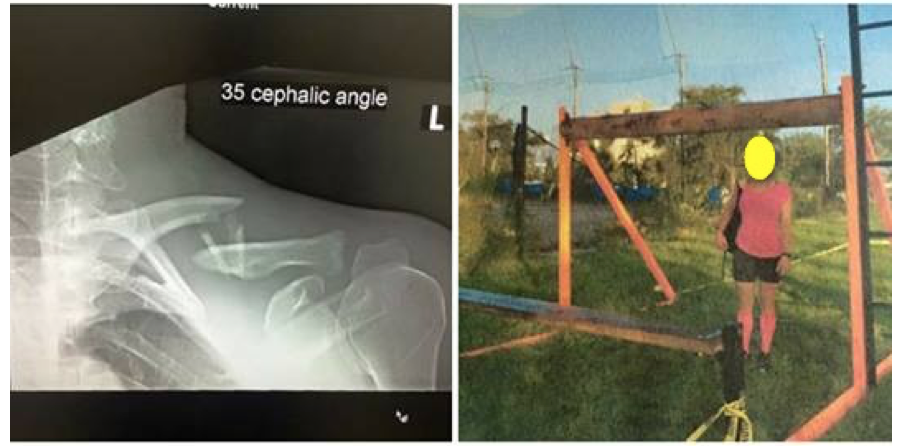
That middle challenge is what is the most danger here, as we are looking at bruised or broken tailbones, spinal disc injuries, broken ribs, broken scapula, broken clavicle, broken neck, concussion, and possibly a fractured skull as the most likely consequences of this type of obstacle failure.
No other regularly featured obstacle presents such a high risk of serious injury with the typical failures.
All of the above gets much, much worse in mandatory completion races. In a Spartan, for example, you have one shot at it. If you fail, you do your burpees and continue in the race, fully ranked. At races like the OCRWC, if you fail an obstacle, you lose your band and are no longer officially ranked. Because of this, racers will try over and over again for literally hours.
Doing this on the sternum checker greatly increases the chances of injury, which, as I just described, are already high and serious.
The Gender Gap
This is always a touchy subject in OCR, but what the hell: in for a penny in for a pound. Here are the top-5 most failed obstacles at the 2015 OCRWC. Note that this is among a field of athletes who had to qualify, so a much higher caliber field than a typical race.
| Obstacle | Total Failures | Women Failures | % of Women Failing | Men Failures | % of Men Failing |
| Skull Valley | 544 | 266 | 67.51 | 278 | 28.99 |
| Tip of the Spear | 389 | 221 | 56.09 | 168 | 17.52 |
| Platinum Rig #1 | 345 | 189 | 47.97 | 156 | 16.27 |
| Sternum Checker | 312 | 229 | 58.12 | 83 | 8.65 |
| Platinum Rig #2 | 263 | 165 | 41.88 | 98 | 10.22 |
The 1st sternum checker was far and away the biggest gender gap obstacle at the 2015 OCRWC. It is not unreasonable to extrapolate from this that failure rates among women at non-championship races with a lower average caliber of athlete would be even higher…65%, 75%, 80%+.
The gender gap on SC1 sticks out like the proverbial sore thumb. There was much post-race discussion after OCRWC 2015 about SC1 being unfairly hard for shorter racers, which demographic stats will tell you are mostly women. Looking at these numbers, you can make the case that they had a case.
Historically, the Platinum Rig is the big band-breaker at mandatory completion races. However, these women handled both Rigs significantly better than they did SC1.
Finally, keep in mind that SC1 is a simple single obstacle, unlike the others, which are long and involved. This makes the high failure rate there among women even more of a red flag.
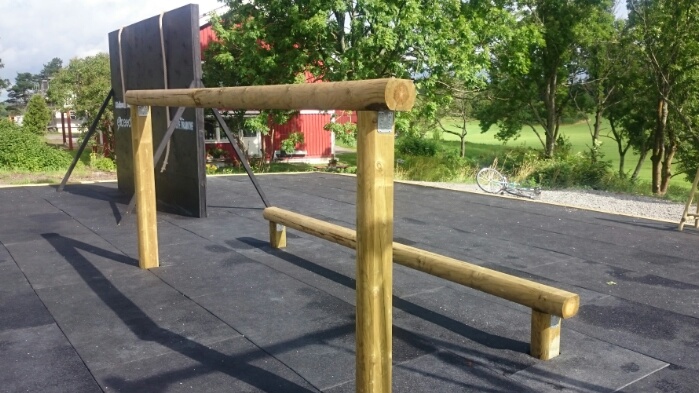
It’s NOT too hard: it’s too DANGEROUS
Right about now I imagine a fair few of you are thinking along the lines of “hey, it’s an obstacle. It’s supposed to be tough. Suck it up, buttercup”.
I have no issue at all with the difficulty of the obstacle. In fact, if anything it is too quick and easy for strong racers. Here are a bunch of videos showing how quick and easy SC is if you know how to do it and have the physical gifts and skills required later in the post. Please don’t try these at home. Or ever.
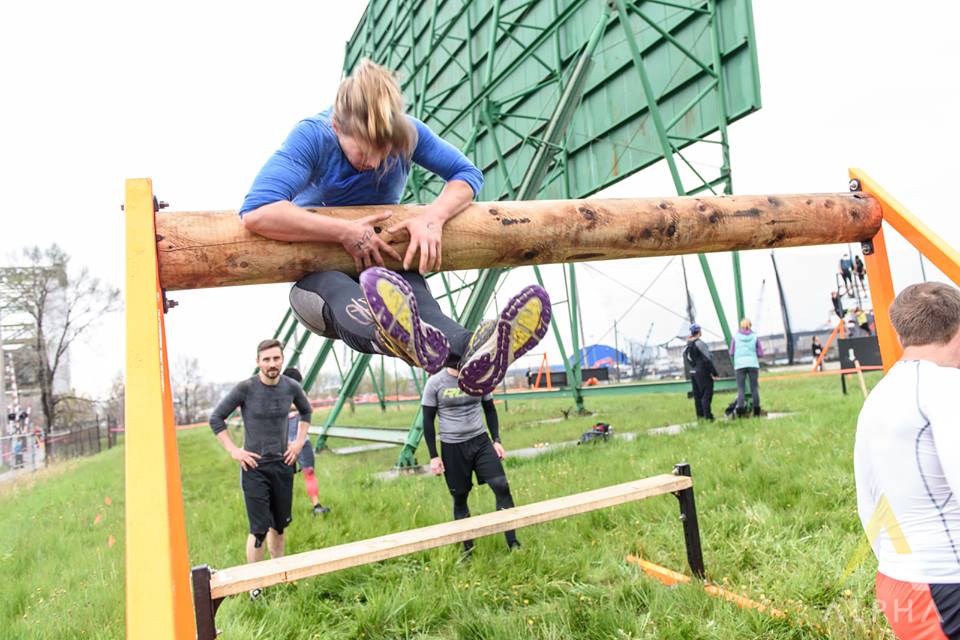
If I were a princess about the difficulty of obstacles, then I’d be ranting about the Platinum Rig or Tip of the Spear or putting Skull Valley right at the end of the race. I’m not because the issue is not with difficulty, but with the consequences of failing the obstacle. For the Sternum Checker, the consequences of failure are potentially very nasty, up to and including paralysis and death.
Let’s compare and contrast likely fails on the Sternum Checker with the most likely fails on other common obstacles.
- Fail the rope climb, and you slide down the rope. Maybe some rope burn, maybe a twisted ankle.
- Fail a warped wall, and you slide back down. No likely issues.
- Fail a Rig, and you tumble a couple of feet to the ground. No likely issues.
- Fail the Irish Table and you swing back down to the ground, or maybe fall a foot. No likely issues.
- Fail Dragon’s Back, and you slide or fall the steeply pitched ramp. Maybe you injure an ankle or wrist or knee if you miss your grip and tumble down.
- Fail the Sternum Checker, and you could easily wind up out of the race or in the hospital or a wheelchair or in the ground.
The Latest Injuries
Latest broken racers were just last weekend in Toronto. One racer was practicing the Platinum Rig sternum checker the day before, crashed off and bruised her tailbone so badly she couldn’t walk the next morning and had to DNS. The worst, however, was a racer who crashed and broke ribs and shattered her clavicle into four pieces, requiring surgery. Word is she has recovered well, but it ruined her OCRWC weekend, to say the least.
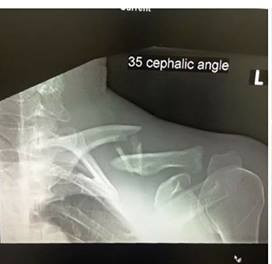
Anyone who has been injured by the SC – please share your story if you want. Normally I am rightfully leery of anecdotal “evidence,” but in this case, reliable injury stats are all but impossible to obtain across the myriad races in OCR-land.
It’s an Inverted Goldilocks Obstacle
What I mean by the heading is that its difficulty rating across the population of racers is a variant of an inverted Normal Distribution.
Please vote for me in the little know Pulitzer Prize category of “worst clarification ever.” What I mean by that is that if you asked 1000 randomly selected racers to rate the difficulty of Warped Wall, Rope Climb, Herc Hoist, Platinum Rig, etc., you’d likely find that some would rate them very hard, some would rate them very easy, and most would be somewhere in between. That’s a type of Normal Distribution, commonly referred to as a Bell Curve.
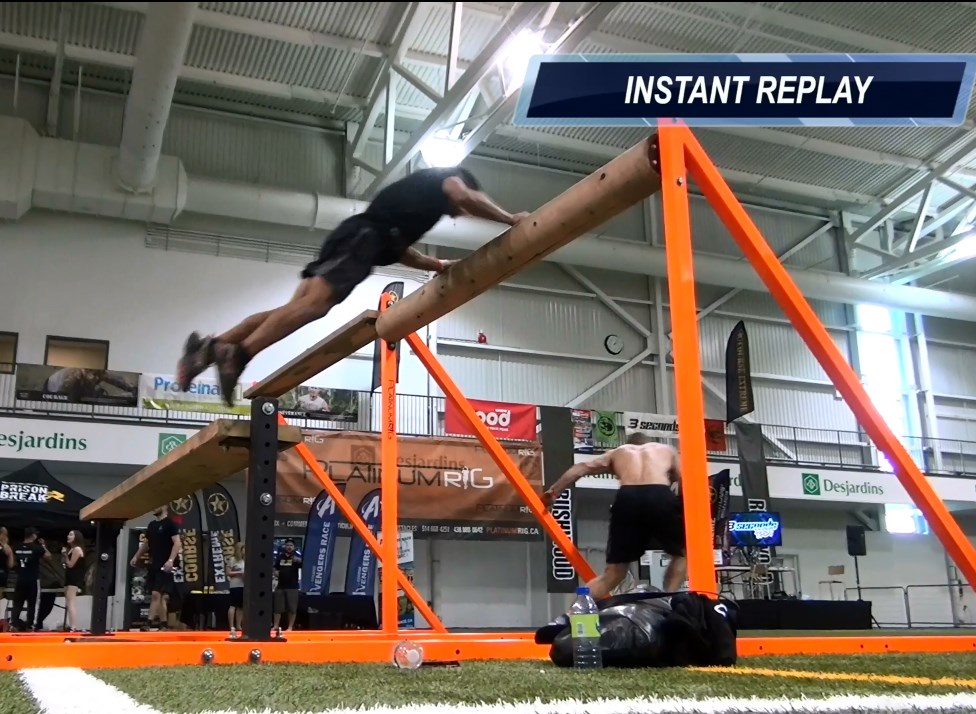
Repeat the above survey with the Sternum Checker, and I think it’d be very different. You would likely find that most of the answers were at the extremes of “dead simple” or “all but impossible.” Very few would be in the middle (the Goldilocks Zone) of “challenging but do-able.”
For the racers who know how to do it, it is dead easy and very fast i.e. not much of an obstacle. For the majority who don't, it can be a race, season, career, or potentially life-ending proposition.
I know of a woman racer who is going to race OCRWC with the certain knowledge that she will be giving up her band at the sternum checker. “I just can’t risk any more blows to my head.”
Another case was a very tough racer who spent over 1 hour trying SC1 at OCRWC 2015. She made it, which is a testament to her toughness. However, she was essentially one big bruise from wrists to knees and had to bail on the team race the next day.
I know wherefore I speak, as I spent a lot of time trying it out (the new Platinum Rig version). Have some video of people cruising through it effortlessly.
.
.
.
YAHOO – You Always Have Other Options
There are many safer alternatives that offer similar physical challenges such as the Irish Table and its variants, without risk of serious injury
If you want a mind-f&*k confidence obstacle, then something like Toughest’s Dragon’s Back fits the bill perfectly, again without the high risk of serious injury. Heck, even something as simple and harmless as a 10-15 foot jump into water would stop and balk many racers, with almost no risk of any remotely serious injury.
OCR should challenge racers. But it shouldn’t break them.
Additional Comment:
Garfield Griffiths, former BattleFrog Race Director, reached out to MRG with this comment about the obstacle at BattleFrog:
” NOTE. Peter. Dirty Name or Sternum Checker WAS NOT an original Battlefrog obstacle. I refused to add it when I created the original BF format (even though it was VERY Navy SEAL/military in nature.) I never liked it. It was added literally the 1st race after my departure in early 2015. I agree, its to risky for OCR. Yes, elites can eat it up, but joe public can get badly hurt, or worse. Yes, it was at OCRWC, mainly as it was built into the course in Ohio. Again, I was never a fan.”
Disclaimer: The viewpoints expressed by the authors do not necessarily reflect the opinions, viewpoints and official policies of Mud Run Guide LLC, or their staff. The comments posted on this Website are solely the opinions of the posters.
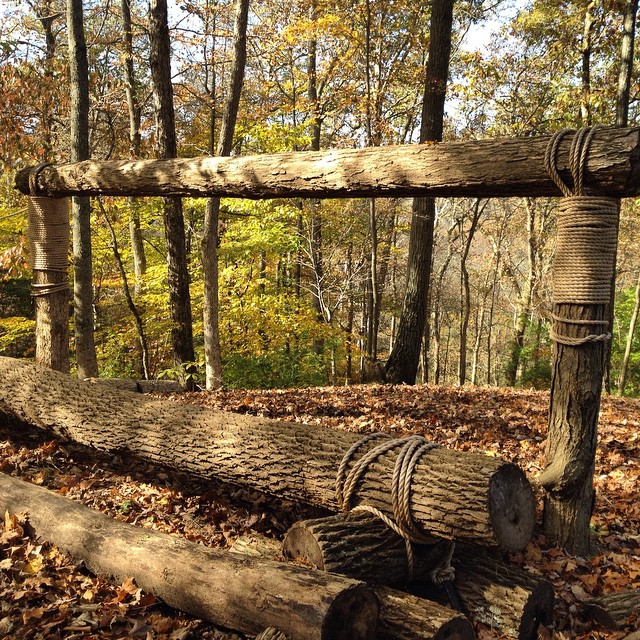


I’m a “weekend warrior” so my opinion probably won’t mean much, but here goes……When I see this obstacle, I know I’m doing burpees. I’ve tried it 3 times, made it once, the other two times I nearly knock myself out. Just isn’t worth the injury. My son, who is a wrestler and use to harder knocks than I could ever take, can do this obstacle easily but that has come from lots of practice and he still misses on occasion. The last time he missed, the damn thing was uphill. Who does that?!?! While I wish this thing would go away, it probably won’t. It should be an obstacle that should NEVER be placed uphill.
Nicely written and excellent points.
I love to be challenged, but, I do not like to attempt obstacles that I know could potentially get me a 5 star stay in a hospital. I love obstacles, but I absolutely hate the sternum crusher, and not because it’s challenging (im vertically challenged to begin with) but because of the dangers associated with completing it or even trying.
OCRWC 2015, I had never ever tried the sternum crusher, only seen videos of the best way to tackle this obstacle. I finished the race with my band, but that band alsmot cost me in injuries. I must have spent two hours attempting the sternum crusher, 2 hours of brushing, and beating myself up trying to get over this thing. Witnessing other ladies and gents doing the same thing, some succeeding, while others giving up their band and moving on with defeat. It pained me to see this because I thought I was going to be one of those walking up to the volunteer to get my band cut. I fought hard and managed to complete that obstacle. But i was beat up, ribs hurt, arms hurt, and legs hurt. I was supposed to do the team event the next day, and had to pull out because walking hurt, let alone run or even do any obstacles.
XMAN Toronto 2016, there was a sternum crusher at some point in the race, I gave it two shots. The first i was hesitant and fell, the second attempt i went at it abit harder and almost made it but quickly flipped back and fall, the thump did not feel good at all. And i told the volunteer, screw this im gonna do the penalty because i dont need another injury on top of the one i already had.
I was very fortunate to not break any bones or suffer more serious injuries like some of my fellow racers did, but this obstacle needs to be taken out because there are plenty obstacles out there that offer the same kind of challenge without serious consequences. Heck put in 2 platinum rigs of different configurations, or put a series of Irish tables, the combinations are endless. I had a good discussion with Peter before OCRWC 2016 and I agree with his view on this particular obstacle, and I hope that the sternum crusher gets permanently removed from all future OCR events.
Hi,
While practicing the SC in an OCR event last year, I tried this obstacle around 20 times, and the last was the one enough since I was injuried in the right side of the diaphragm with a deformation of a rib, hopefully this was not broken but the pain stayed for a few weeks and it is still deformed.
Like every obstacle, practice give improvements bu as you well said above: “It’s NOT too hard: it’s too DANGEROUS”.
First time I tried this was at BoneFrog. I crashed and burned so hard that the volunteer said that my fall was my penalty for failure. The next time I did it was at BattleFrog. I completed it, but not without a broken rib. So even though it wasn’t considered a failure, it wasn’t a success. Now I just skip it, and do the penalty. It’s not worth it.
The first time I saw a version of the Sternum Checker was the double one at the Bonefrog Challenge several years ago. Although I was intimidated by it, I did complete it without a problem. I then got to experience the one at the Mud Guts & Glory course during the first OCRWC. That was not the same. I did, in fact, break my ribs on my attempt and lost my band as a result. It did make finishing the race a tad bit tough, but I got it done. On the next day, for the team race, I waved goodbye as I handed in my band and ran past. I then was faced with similar obstacles at the Shale Hill course and although my ribs were still sore, I was able to somehow convince myself to do them – and was able. They are not as far or high and the top log is not nearly as robust. Then came my return to the OCRWC the next year. I was so leery of it but was intent on keeping my band – I did not. I bruised my ribs (yet again) and could not get myself to launch as high as needed. Yes, I am short and yes, I think it is harder for those of us vertically challenged, but I know a Sinergy Teammate of mine who did it even though she is shorter than I am. So, that is not the only issue. Once it gets into your head, you are in trouble.
That day I spent over an hour trying to get myself to do it but no way. A friend told me that my mistake (And I already knew this) was that instead of running right up and leaping without hesitation, I would stop, pause on the lower log and thus ruin any momentum I had. I did again revisit the one at Bonefrog and again was able to do it – so it is the height, distance and breadth of that second log that caused so many problems. I would not mind NOT seeing it again at the OCRWC (Was thrilled it was not at Blue Mt) but I know so many who would argue. So, that is my Sternum Checker story. Thanks for opening up this topic.
I remember this obstacle well. I saw it for the first time in 2015 at OCRWC. I had never even heard of it so I had no preconceived ideas or fears. If only I’d known to run at it and to spring from the bottom log I might have made it. I am 5’1″ and I think this is why I had such a tough time with completion. In my subsequent two attempts at the same race I got very close, but inevitably fell off and landed on my back, hitting my head. I was becoming hypothermic and bruised so I surrendered my band. I can remember a British lady (bleeding from torn skin on her chest) asking if she could borrow my jersey for more protection. What can I say? Universal precautions! I’m not sorry I kept going. I finished. And I successfully completed both Platinum rigs, skull valley, the Irish table, and the smaller gut check. At Bonefrog 2016 I saw the double dirty name and thought future quadriplegia. Too dangerous for me. I’ve got too much to lose. After all, my child needs me and I pay the bills around here. Add another rig. Out me in cold water. Make me run uphill with half my body weight, but can that sh#£!
Agree and disagree. Yes, I have my horror stories on this one as I saw people flip and land flat, knocked out cold. Very scary. I was on the second of two SCs on the course. At first I let runners attempt without any intervention on my part. But after that scary result, I stopped nearly every one of them who showed even the slightest hesitation or started the obstacle with the obviously wrong technique. Later on a twosome came up and they were just going to bypass altogether. One was limping badly. I asked them what happened. Injured on SC1. I asked them what technique they used. Deer in the headlights. I demonstrated. The healthy runner then did the SC successfully. The injured runner said, “I wish the volunteer on SC1 had showed me that. Then maybe I would not have gotten hurt.”
Like any obstacle, learn the technique. Stay healthy.
I agree with your points. I saw a lot of people getting hurt and injured on the SC at OCRWC 2015. I think the Irish Table is a good alternative.
The key is that not all sternum checkers are created equal. The height and distance apart along with the girth of the top log can vary creating drastically different obstacles. I witnessed a woman fracture her spine at OCRWC 2015 (saw posts about her diagnosis later). What made that one so dangerous was its height and width apart paired with freezing cold wet racers. Races seem to be leaning towards getting a shock and awe value….but all they are doing is creating a more dangerous race. And I do disagree with the author – I think Dragons Back teeters on being unnecessarily dangerous as well. I saw a woman bust her face hard at OCRWC 2015 and watched many people fail and fall to the ground during the OCRWC 2016 5k. I didn’t see anyone get hurt but you could easily destroy an ankle or knee or crack your head on the previous wall. Obviously it is not a risk free sport, and I don’t shy away from that (I rode horses for 18 years)…..but creating unnecessary risk is just plain stupid.
Emilie, I agree (As I mentioned in my previous comment) that not all are created equal. I also heard about that racer who, I believe lost a few teeth. But the difference here is – For anyone who qualified for the OCRWC, Dragon’s Back is easily doable – it is ALL mental. Whereas the sternum checker is not only mental but can be a major physical challenge as well. Yes, I know a very short woman who was very successful at it in Ohio, but I do feel that for short racers, it is much more difficult.
In the OCRWC in 2015, was the first time i came across this Obstacle. during my first and only attempt cause i made it over it, i ended up cracking two ribs on my right side, short term fun long term pain. in the end my ribs have all but heal, turn out right where i had cracked them now has Arthritis and i am only 32 years old. if i lay down for too long or lay the wrong way , it feels like i have 200 lb man sitting on my chest and the doctors told me there is nothing they can do about it but live with the pain for here out. Now i know thats nothing compare to what happens to most people but that just my story on the SC.
The first time I saw a “sternum checker” was at the Bonefrog the year that OCRWC came into existence. I did complete it – after a time – without incident, but then came my next time. It was at the first OCRWC and it not only cost me my band but did result in broken ribs. The next year there, I was so hesitant – that try as I might, I could not get myself to commit – which is already a problem. I have since seen other versions both at Shale Hill and at Bonefrog, but each of them were not as high, not as far and the top log not as wide. I have completed all of them since (Even this past weekend in Charlemont, MA) but there is always that niggling feeling in the back of my head. I do agree with you that it is probably best to remove it from the OCR world. It is too fraught with hazards.
I have done the sternum checker fearlessly and I never understood why it put fear in my husband who races with me …until one race I watched the girl behind me attempt it and fall to the ground with a sickening sound which followed with screams of agony, she was carted out on a stretcher to the ambulance. My husband walked around shaking his head and saying aww I told you. I will never do another one since witnessing that, It out the fear in me. I have seen people getting injured but never like that,
I will never forget those sounds of agony!